Inflammation of the prostate today is the leader in the group of male diseases, which are transmitted mainly through sexual contact. Its complications threaten infertility, decreased libido, impotence.
The first symptoms of prostatitis in men
Prostatitis is an inflammatory disease. This is one of the most common urological pathologies, which is diagnosed in representatives of the powerful half of humanity.
Most often, this disorder is found in men over thirty years, although recently the disease has become much younger. The treatment of prostatitis should be performed by specialized specialists (urologists or andrologists), as there is a high possibility of various complications.
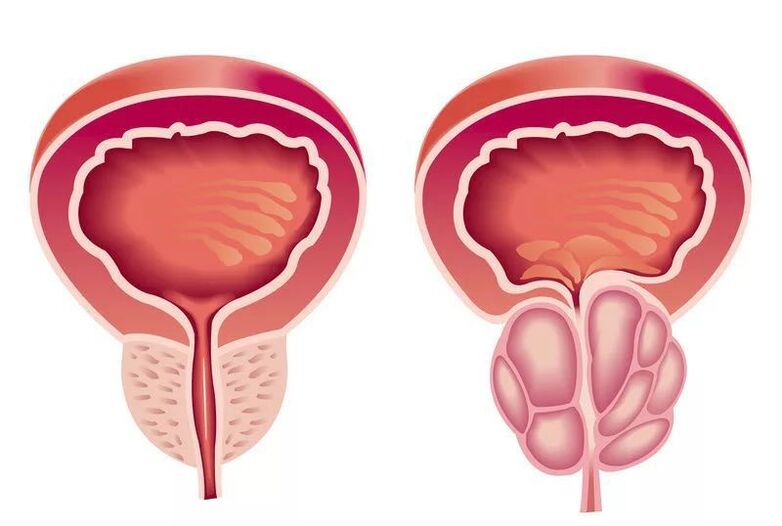
How is prostatitis treated?
With the help of drugs
- NSAIDs - relieve inflammation, fever and chills. They have a slight analgesic effect. With the onset of prostatitis, short-term treatment with anti-inflammatory drugs and taking vitamins is needed to keep the gland in a normal state. Men are prescribed: Diclofenac, Nise, Voltaren, Nimesulide. Drugs are produced in suppositories, tablets, injections.
- Antibiotics - designed to eliminate the infectious or bacteriological agent of inflammation. The treatment regimen for prostatitis is signed after the pathogen is identified and its resistance to antibiotics is checked. The course of treatment is 7-10 days. In severe cases, treatment is extended for up to two weeks.
- Hormones are recommended if the usual course of medication was not beneficial, as well as with a decrease in sexual desire due to advanced disease. Hormone therapy is prohibited at an early stage. Medications are taken under the strict supervision of a urologist.
- Symptomatic medications - to eliminate the pain syndrome, take Aspirin tablets. Convulsions are removed by No-shpa. With persistent severe pain, Novocain blockade is indicated.
- Vitamins and medicines to maintain prostate function. During the period of recession, it is recommended to take drugs to normalize metabolism and improve blood supply to glandular tissues and juice production. For this, herbal preparations are prescribed: Prostamol-Uno, Prostate-forte and the like. To strengthen the immune system, a complex of vitamins and minerals appears: Duovit, Vitrum.
Self-medication is dangerous, it does more harm than good. Before taking any of these medications, you should consult a urologist.
By using physiotherapy
- UHF and microwave.
- Magnetotherapy.
- Mud treatment.
- Galvanizing.
- Hyperphoresis.
- Laser treatment.
- Thermotherapy.
natural remedies
Diagnostics
To start the treatment of prostate inflammation in time, you must contact a competent specialist who will perform a comprehensive examination and make the correct diagnosis. The list of recommended diagnostic methods includes the following:
- Blood tests - study of the biochemical composition, for the content of PSA (prostate specific antigen), general analysis and PCR if necessary.
- Urine analysis - the man is asked to urinate in many different containers in order to conduct the study in different ways.
- Scraping the surface of the urethral canal to detect an infectious pathogen.
- Bacteriological culture of prostate secretion and urethral secretions to determine the bacterial pathogen and its drug resistance.
- Prostate ultrasound - allows you to assess the size and shape of the gland, the presence or absence of fusion of tissues, adhesions and lesions of the tunic.
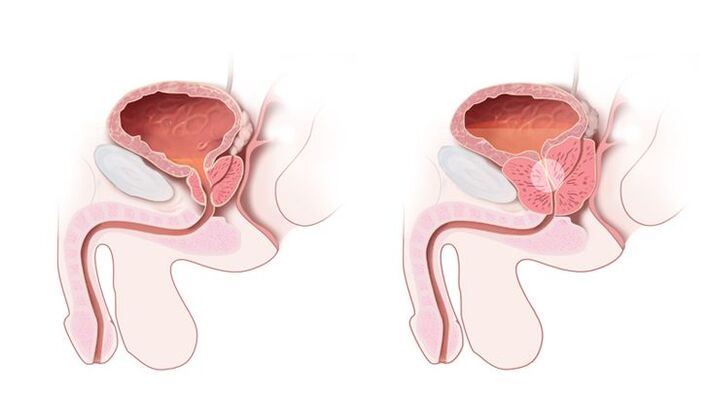
A mandatory element in the diagnosis of prostatitis is the digital examination of the rectum. The finger examination allows the doctor to feel the gland and evaluate its density, structure, shape and size. Also, during the rectal examination, a prostate secretion is obtained, which is then sent for analysis. Additional test methods are assigned to a specific patient individually, if appropriate.
These can be measurements of urine flow rate, magnetic resonance or computed tomography, pelvic radiographs and other methods.
Acute prostatitis
The disease begins with a sharp rise in temperature (up to 40 degrees), excruciating headache, fever. The symptoms that appear are accompanied by pain in the groin, perineum, back, secretions from the urethra, frequent urination and constant desire to urinate.
Emptying the bladder is delayed, a burning sensation. The urine itself becomes cloudy and a mixture of blood may appear in them. There is irritability, fatigue.
The outcome of acute prostatitis may be the complete resolution of the procedure (with timely treatment). Since the changes occur in many organs of the small pelvis, they can not be left to chance, otherwise the corresponding complications will occur:
- Cystitis is an inflammation of the seminal vesicles, the cause of pus in the sperm, which not only reduces the quality of the ejaculate, but leads to a loss of reproductive function.
- Cholecystitis - inflammatory changes in semen are the reason for the development of severe pain during sex, cessation of orgasm, impotence of a psychological nature.
- The formation of an abscess in the body of the prostate, its rupture, purulent damage to the rectum leads to exacerbation of symptoms, severe poisoning of the body, to death.
- Stagnation in prostate tissues leads to a change in their structure, disruption of innervation, blood supply, both in the gland itself and in nearby organs, in violation of their functions. Erection becomes insufficient for full sexual intercourse, premature ejaculation is observed, prolonged sexual intercourse without the onset of orgasm.
- Cyclic changes in the gland, the spermatic cord lead to infertility, reduced sperm quality and sperm motility. The narrowing of the urethra interferes with the normal process of urination, the obstruction of the bladder can cause acute urinary retention, which requires urgent surgical care.
Main symptoms
As noted above, the disease can be chronic and acute. A common and one of the most important symptoms is increased urination. A healthy man usually does not experience more than 10-11 urges to urinate during the day (the normal number is 5-6 urges).
As a result of the development of inflammation of the prostate, there is a negative effect on the bladder, therefore, in the presence of the disease, the following symptoms will appear:
- Increase in the number of impulses (while the daily volume of urine remains the same).
- Urine is excreted in small portions, which is associated with the reception of false signals from the bladder receptors due to the presence of an inflammatory process. Also, there may be a feeling that the bladder is full even after emptying.
- Pain when urinating, due to narrowing of the urethra due to the inflammatory process in the prostate.
- Difficulty urinating due to compression of certain areas of the urethra due to inflammation. In some cases, men can not empty their bladder at all because of it.
- At night, the walls of the bladder begin to give false signals, which increases the number of trips to the toilet during sleep.

Part of the diagnosis of prostatitis can also be made by monitoring body temperature, in conjunction with problems related to urination. If these problems are accompanied by an increase in temperature to hypopyretic and febrile values, then with a high degree of probability we can talk about the development of pathology. It is important to note that in the later stages of the disease, on the contrary, a decrease in body temperature to 35, 5-36 degrees can be observed, which is an extremely negative and dangerous symptom in any case, which should not be allowed.
In the middle stages of the disease, blood may be seen in the patient's urine. This sign is relatively rare and often not indicative, but extremely dangerous. It can begin to manifest due to purulent fusion of the prostate, trauma to the prostate gland and also in cases of complications of the inflammatory process with hyperplasia. Treatment in this case is complicated (surgery is often required).
Treatment should begin immediately after the onset of the first symptoms of the disease. If there have been at least some, albeit seemingly insignificant, problems with urination, which in some cases are accompanied by fever and pain in the area of simplicity, then you should immediately make an appointment with a urologist to clarify the diagnosis. It is imperative to pay attention to the signs of pathology described above, as it is possible to defeat prostatitis quickly and painlessly only with timely treatment.
Why does the prostate gland become inflamed?
In fact, there are only 2 main reasons:
- Contamination. Most of the time, prostatitis develops precisely because of an infection in the prostate. Infection can occur through the bladder, urethra, rectum, blood and lymph. It turns out that prostatitis itself is often a complication of an existing disease. Therefore, never self-medicate, you must first treat the source of the infection. Cystitis, pyelonephritis, urethritis, STDs (sexually transmitted infections) - this is understandable, they are directly related to the prostate. Even untreated tonsillitis, sinusitis, the flu, caries can also haunt the inflammation of the prostate.
- Circulatory disorders. This may be due to structural features and urethral spasms, conduction disturbances of the nerves and the work of the abdominal and pelvic muscles, as well as external factors.
However, whether or not prostatitis develops depends, first of all, on predisposing factors:
- Chaotic sex life. The abundance of sexual partners, especially unprotected intercourse - this depletes the immune system, which must constantly deal with foreign microflora in female secretions. And sooner or later it fails.
- Long abstinence. This is the other end. Lack of sex has a bad effect on the general condition of a man and especially on the prostate. Its secretion stagnates, blood circulation is disrupted, infection develops.
- Masturbation. It happens that men try to escape the lack of sex with masturbation. However, this causes a decrease in prostate tone, it becomes lethargic. It is isolated even in a separate type of prostatitis - congestive.
- Excess weight. In overweight men, the load on the pelvic organs is very high, as well as on the whole body in general. The blood supply is disrupted, because of this, prostatitis, hemorrhoids and a number of other diseases occur.
- Hypothermia. "Do not sit in the cold, " they tell all the girls. However, this also applies to men. Extreme winter fun enthusiasts, avid fishermen, old car owners (oh, how often I see men lying on cardboard under the car in winter), even passengers on icy trains, and fashionistas in rolled-up pants instead of hats are at risk. . Oh yes, urinating outside in the winter is also fraught with serious consequences.
- Inaction. Basically, this applies to the workflow, when you have to sit in one place for a long time: drivers, clerks. It is especially harmful to cross your legs, as the load on the prostate only increases.
- Stress. Psychological problems, chronic lack of sleep, overworked schedule are the favorites of infections.
- Retention of urge to urinate. Are the 5 minutes saved in a busy workflow worth the potential problems?
- Bad Habits. So where without them? Alcohol and nicotine abuse that only violate.
- Wrong diet. Fatty, spicy, salty foods are a magnet for pelvic floor diseases.
- background diseases. Any untreated infectious diseases can be complicated by prostatitis.
- Tight underwear. As well as "modern" too tight pants. They tighten the small pelvis, disrupt blood circulation, cause swelling and inflammation.
- Physical overload. Professional athletes, loaders, active visitors to gyms are at great risk.
- self-medication. Sometimes men are ashamed to admit their problems even to a doctor, trying to crush the disease with various folk remedies, proven and not so good. However, it happens that without drugs prescribed by a competent doctor, one can not deal here.
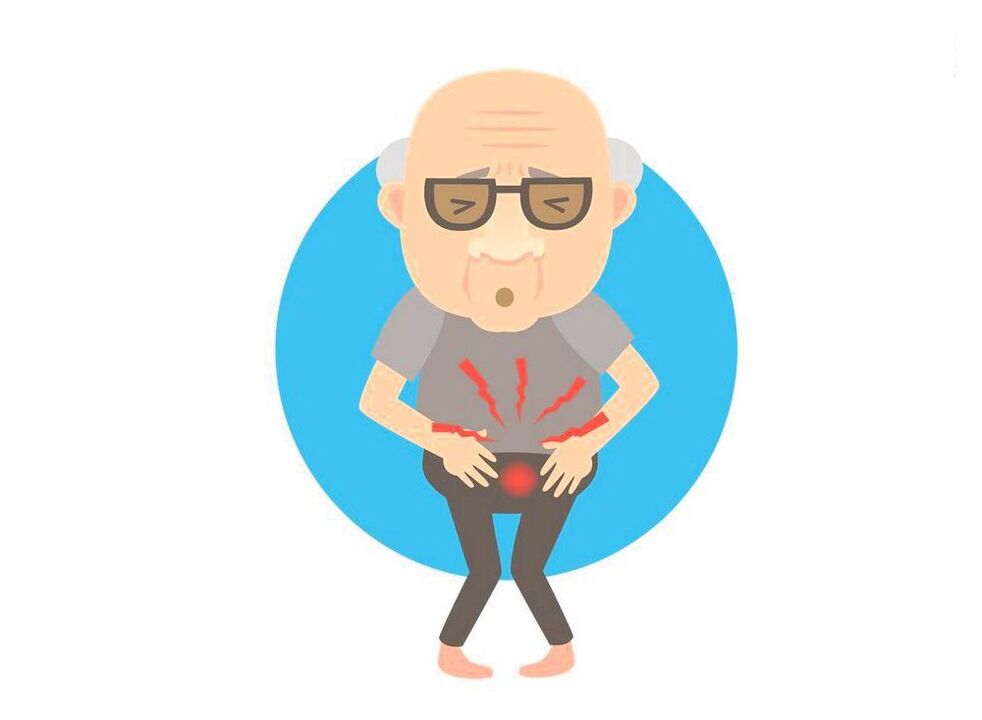
How is the disease diagnosed?
The diagnosis is made by a urologist or andrologistafter examining the patient, collecting a souvenir and studying the symptoms. The doctor must discover the method of contraception of the patient, the presence of STDs in the sexual partner, the possibility of anal intercourse without a condom. This data facilitates the diagnosis and guides the doctor's thinking in the right direction. Prescribing the onset of symptoms of the disease or discomfort in the perineum allows us to judge the course of prostatitis and its severity. The urologist necessarily examines the patient's genitals and performs a rectal examination of the prostate gland. To do this, he inserts one of his fingers into the patient's anus and palpates the anterior wall of the rectum that protrudes from the prostate. The pain and its size indicate the intensity of the inflammatory process.
The doctor then conducts a series of organic, microscopic, bacteriological and immunological studies to determine the cause of the disease. The most common diagnostic method is a urine sample with 4 or 3 glasses. The first method is more time consuming and difficult in practice, as it requires the patient to intentionally stop urinating several times. The second modification is simpler: the patient urinates continuously in three different containers in equal portions. The first part talks about the condition of the urinary system, the second about the pathology of the bladder and kidneys, from the third they receive information about the condition of the prostate gland. All material collected is examined under a microscope. With prostatitis, white blood cells and sometimes bacteria are found in the third part of the urine.
The prostate secretion is also taken for microscopy.To do this, the doctor massages the prostate through the wall of the rectum for some time to empty the urethra. The coatings are made from the material collected in the laboratory, dyed and studied under high magnification. A sign of inflammation is leukocytes, a bacterial etiology of the disease is the bacteria in a smear. To determine the type of pathogen, the prostate secretion is inoculated into nutrients. If there are pathogenic microorganisms in it, then after 3-5 days they form microbial colonies, which can then be studied. The bacteriological method allows obtaining data on the sensitivity of the microflora to antibiotics.
From the instrumental diagnostic methods are performed:
- Kidney ultrasound?
- Prostate TRUS with dopplerography - an ultrasound catheter is inserted into the rectum for better imaging of the prostate gland, its blood flow is further evaluated.
- Ascending urethrography is necessary for persistent recurrent prostatitis. A radiopaque substance is injected into the urethra, after which a series of sequential images are taken.
Apart from these methods, all types of research on STDs are of great importance. Among them are:
- PCR ejaculation, prostate secretion, urethral mucosal scraping - the method allows you to detect a wide range of pathogens.
- Blood ELISA - for the detection of specific antibodies to STD pathogens.
Types of prostatitis
According to the criteria of the American National Institutes of Health (NIH USA) since 1995, there are four categories of prostatitis:
- Category I: Acute prostatitis.
- Category II: Chronic bacterial prostatitis.
- Category III: Chronic prostatitis / Chronic Pelvic Pain Syndrome (CP / CPPS).
- Category IIIa: Chronic prostatitis / chronic pelvic pain syndrome with signs of inflammation.
- Category IIIb: Chronic prostatitis / chronic pelvic pain syndrome without signs of inflammation.
- Category IV: Asymptomatic (asymptomatic) chronic prostatitis.
Occasionally, chronic granulomatous prostatitis also occurs, which is not mentioned in this classification.
In turn, most experts distinguish between:
According to the course of the disease:
- acute prostatitis;
- chronic prostatitis;
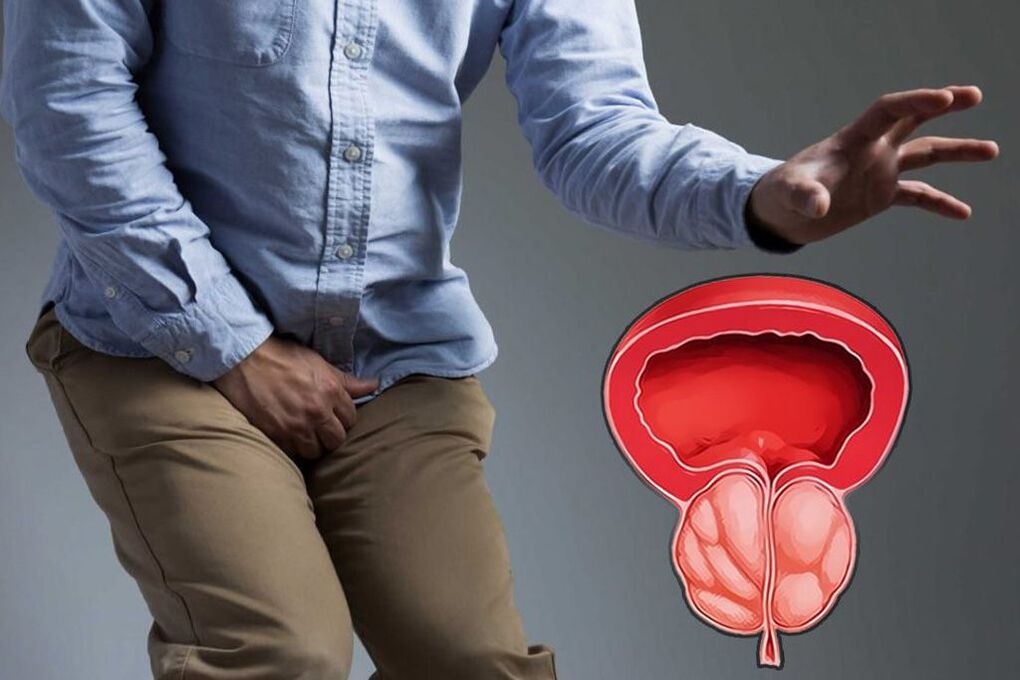
Depending on the causes of the disease:
- bacterial prostatitis;
- non-bacterial prostatitis
In most cases (especially in men under 40), bacterial prostatitis is observed.
Based on this, there are:
- acute bacterial prostatitis;
- chronic bacterial prostatitis;
- chronic bacterial prostatitis.
Prevention
To prevent inflammation or recurrence of chronic pathology, you should follow these recommendations:
- Reduce the amount of alcohol consumed.
- Exercise regularly.
- Avoid hypothermia.
- Do you quit smoking?
- Avoid stressful situations.
- Treat inflammation in a timely manner - first of all, this applies to genital infections.
- Take a contrast shower.
- Avoid lifting heavy objects.
- Use barrier methods.
- Have sex regularly.
- Take vitamin preparations.
- Involvement in strengthening immunity.
- Visit a urologist twice a year.
- Eat right and balanced.
Purpose of the prostate in the male body: what is it responsible for?
The prostate is an exocrine gland in the male body.
Iron belongs to the reproductive system and is responsible for the production of certain specific substances:
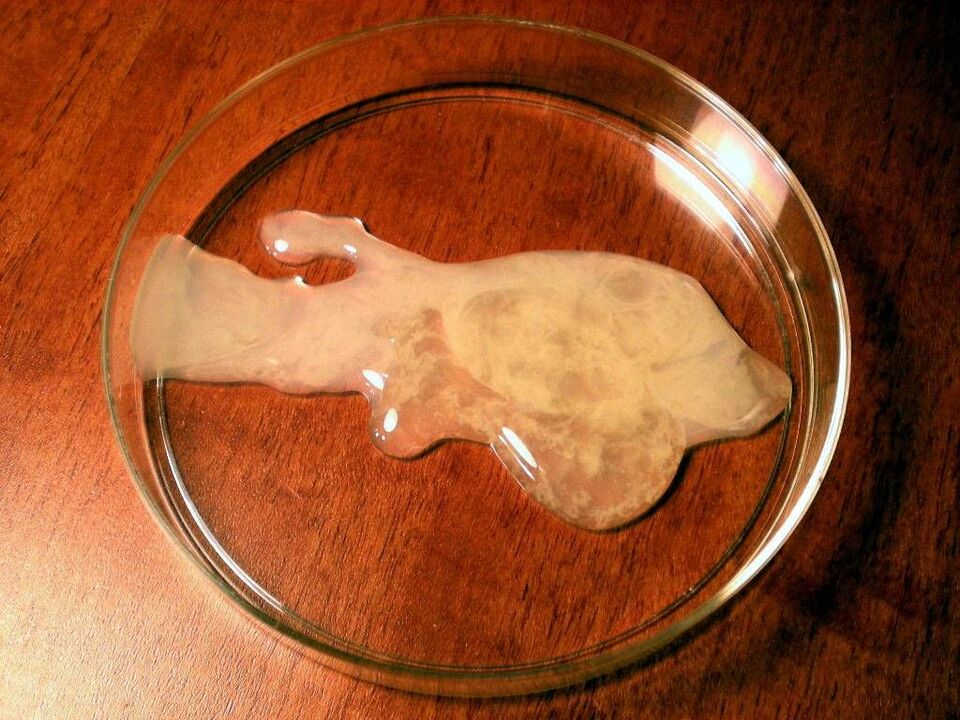
- the main one is the secretion (prostate juice), which provides the necessary viscosity of the ejaculate and, consequently, the normal motility of the sperm. When the sperm is too thick, fertilization is difficult and a woman simply cannot get pregnant by a seemingly healthy man.
- other ingredients maintain normal sperm composition. These include biologically active substances, immunoglobulins, enzymes, vitamins, trace elements, etc. The rules of these substances are individual and it is the prostate that regulates their content.
Thus, it is responsible for a man's reproductive abilities, for the opportunity to have a regular and full sex life and to have children. This is the main function of the gland, but there are others, no less important.

























